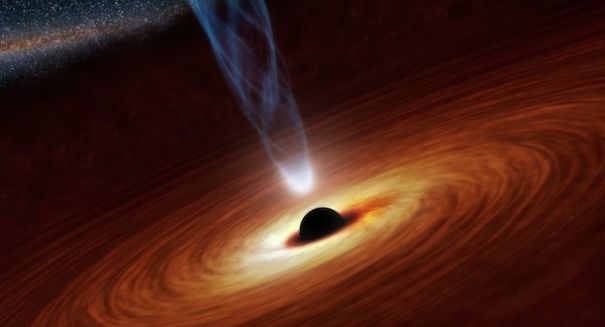
Two dancing black holes are pulling out all the stops in their performance as they emit a brilliant flashing light.
The theory goes that the black holes at the centers of two merging galaxies would inevitably collide and merge to become one. Well, astronomers have recently seen what appears to be a flash of light coming from deep space that they believe is in fact two merging black holes locked in close orbit around each other. Astronomers at the University of Maryland say that the recent detection of a pulsing quasar may be evidence of two black hole “twins”, or binaries, merging as two galaxies collide. According the Tech Times, Suvi Gezari, astronomy professor and co-author of a study published in Astrophysical Journal Letters says, “We believe we have observed two supermassive black holes in closer proximity than ever before.”
These two black holes are arguably so close that they are emitting gravitational waves assumed by Einstein’s theory of general relativity. When black holes consume the matter around them, the matter is accelerated and heated to a point where it begins emitting massive amounts of energy. This energy manifests as some of the brightest energy sources in the entire galaxy, known as quasars. The theories surrounding quasars suggest that when two black holes are in a binary bind, the consumption of material will be cyclical, which is why the quasar in this instance will appear to pulsate.
Astronomers at Maryland University went in search of this exact phenomenon on their Pan-STARRS1 Medium Deep Survey telescope in Hawaii. They knew they found what they were looking for in a quasar far across the galaxy, PSO J334.2028+01.4075, emitting a rhythmic flash every 542 days. Most quasars don’t act rhythmically and emit bursts sporadically, so the rhythm adopted by this quasar was a dead give-away that the quasar is the product of not one, but two black holes dancing together. Astronomy graduate Tingting Liu says, “What’s really cool is that we may be able to watch the orbital separation of these supermassive black holes get smaller and smaller until they merge.”